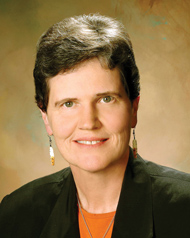
A Call to Civilian Providers
By Pamela S. Hyde
In the 10 years since the September 11 attacks, more than 2 million United States troops have been deployed to Iraq and Afghanistan. Although most of our returning service men and women successfully reintegrate into civilian life, many are unable to transition easily as a result of frequent deployments, separations from family, exposure to combat and sustained injuries. These military members may struggle with a traumatic brain injury (TBI), post-traumatic stress disorder (PTSD), depression, and/or substance use. And far too many, unable to cope, take their own lives.
The statistics are significant:
- More than 1.6 million U.S. veterans meet the criteria for a substance use disorder.
- Nearly 600,000 veterans aged 18 or older experienced a co-occurring substance use disorder and mental illness in the past 12 months.
- More than one million veterans had experienced a major depressive episode within the past 12 months during 2009 and 2010.
 To respond to the behavioral health needs of military members and their families, SAMHSA has been leading efforts to fulfill the goals of the Military Families Initiative, one of eight strategic initiatives introduced in Leading Change: A Plan for SAMHSA’s Roles and Actions 2011 – 2014. Key to this initiative is improving military families’ access to high quality, trauma-informed care by service providers familiar with the culture of the military.
To respond to the behavioral health needs of military members and their families, SAMHSA has been leading efforts to fulfill the goals of the Military Families Initiative, one of eight strategic initiatives introduced in Leading Change: A Plan for SAMHSA’s Roles and Actions 2011 – 2014. Key to this initiative is improving military families’ access to high quality, trauma-informed care by service providers familiar with the culture of the military.
Members of the military generally receive behavioral health care services through the Department of Defense or the Department of Veterans Affairs, but many also receive services from civilian health care providers. Because we know that private sector providers can be more effective in treating military consumers if they understand the military culture, combat experience, and challenges of deployment, SAMHSA encourages civilian mental health practitioners to become certified TRICARE providers. Credentialing information and details on participating in the TRICARE network are available through the SAMHSA Technical Assistance Packet for Becoming a TRICARE Provider.
The well-being and psychological health of military families is an Administration priority and is the goal of the Presidential Initiative outlined in the report, Strengthening Our Military Families: Meeting America’s Commitment. We are pleased that the Initiative is committed to working with the National Action Alliance for Suicide Prevention (NAASP), of which SAMHSA is a member, and to the Veterans Crisis Line, a product of our partnership with the VA and the National Suicide Prevention Lifeline. The report also stresses the need to reduce misleading, inaccurate depictions of veterans and military families with behavioral health problems in the media and recognizes SAMHSA’s 2010 Voice Awards program for excelling at that.
The Veterans Crisis Line—available in the U.S. since 2007 and responsible for more than 17,000 emergency rescues of veterans at imminent risk of taking their own lives—can now be accessed in Germany, the Netherlands, Belgium, the United Kingdom and Italy by active-duty military, family members, and civilians. The lifeline will soon be available in other European countries and parts of Asia. Military members anywhere with Internet access, however, can chat online with qualified counselors.
Because social connectedness is vital to an individual’s mental and emotional wellbeing, SAMHSA is pleased to be a part of the expansion of Partners in Care, a program to engage members of faith-based communities in creating a sense of community for National Guard members and their families. The program, originated by Chaplain (Colonel) Sean Lee of the Maryland National Guard, will be adopted by five other states under the auspices of the Military/Veterans Task Force of the NAASP. SAMHSA will distribute the Partners in Care materials that we develop to the National Guard to help additional states as well.
I urge you to read the other military behavioral health care articles in this issue of SAMHSA News for valuable information and resources for military patients and their service providers. Together, we can serve members of our military as they have so steadfastly served us.